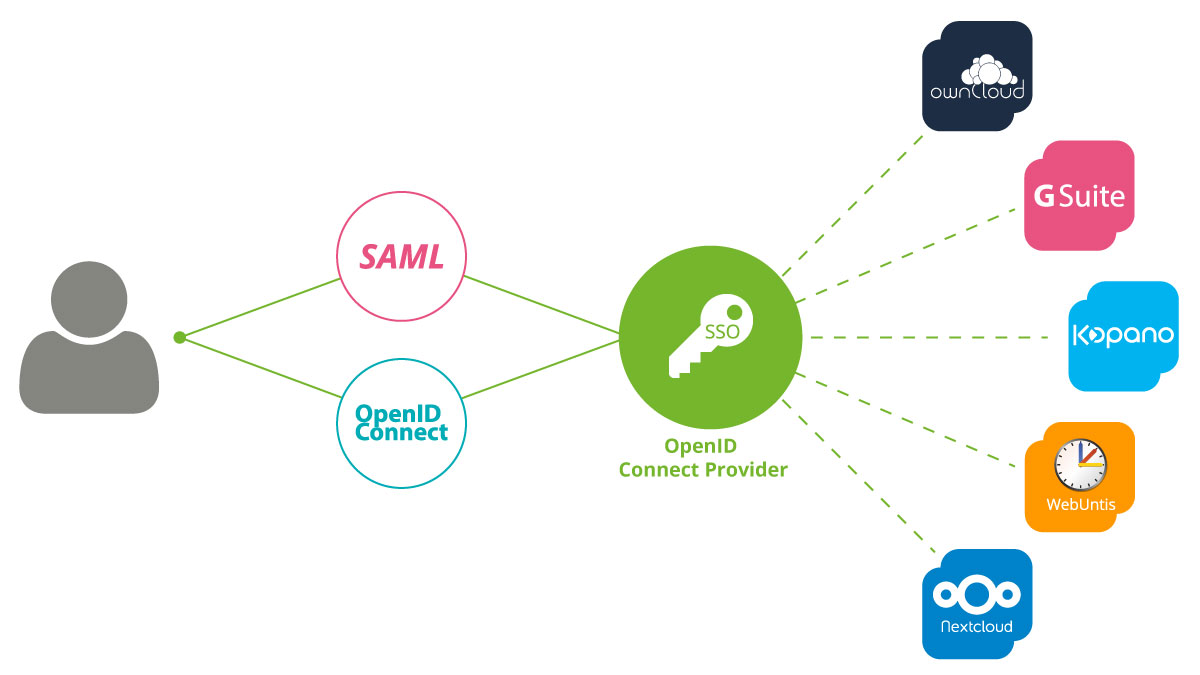In an era characterized by the perpetual need for digital interaction, the prospect of accessing every online service seamlessly with a singular set of login credentials is no longer an elusive dream. This article aims to illuminate the realm of Single Sign-On (SSO), an indispensable technology that not only streamlines authentication processes but also elevates user experience. Our focus today revolves around two pivotal components of SSO – OpenID and SAML – and how they collaboratively empower users with secure and convenient access to diverse online platforms.
Understanding Single Sign-On (SSO)
Single Sign-On eradicates the cumbersome task of managing multiple logins across disparate applications. Functioning as a centralized hub, it validates user identity once, thereby granting access to all authorized applications. This not only enhances user convenience but also fortifies security by mitigating password fatigue and the inherent risks associated with credential compromise.

OpenID: Revealing the Protocol
OpenID stands as a decentralized SSO protocol grounded in open standards, rendering it facile to implement and widely supported across various platforms. Users authenticate themselves through their existing accounts, such as those on Google or Facebook, granting access to authorized applications. This approach ensures heightened user privacy and control over their data.
SAML: Immersing in the Security Assertion Markup Language
SAML, an XML-based protocol, is designed for robust enterprise-grade security. Employing potent encryption and centralized user management, SAML proves to be ideal for organizations necessitating stringent security measures. Its seamless integration with existing enterprise systems allows for comprehensive authentication management.
Learn about SSH: https://blog.secure-shell.com/understanding-secure-shell-ssh/
Choosing Between OpenID and SAML
The selection between OpenID and SAML hinges upon specific requirements:
- OpenID excels in consumer-focused applications, offering user-friendly interfaces and social login options.
- SAML, on the other hand, shines in enterprise environments, prioritizing robust security, cross-domain authentication, and seamless integration with existing infrastructure.
Benefits of SSO Implementation with OpenID and SAML
The adoption of SSO, facilitated by OpenID and SAML, bestows several advantages upon organizations and users:
- Augmented user productivity: Eliminating repetitive logins not only conserves time but also minimizes user frustration.
- Elevated security measures: Centralized authentication and stringent protocols work synergistically to mitigate security risks.
- Effortless user onboarding and offboarding: Managing user access becomes a streamlined process.
- Adherence to industry standards: SSO aids in conforming to data privacy regulations, fostering enhanced compliance.
Real-world Examples
Numerous entities have successfully implemented SSO, leveraging either OpenID or SAML:
- OpenID finds applications in leading social media platforms like Facebook and Google, facilitating seamless logins across partnered applications.
- SAML is widely employed by universities and enterprises to manage secure access to diverse internal systems for their staff and students.
Best Practices for SSO Implementation
The successful implementation of SSO mandates meticulous attention to detail:
- Security considerations: Prioritize robust authentication methods, secure data storage, and conduct regular security audits.
- User experience optimization: Ensure a seamless and intuitive login process for optimal user satisfaction.
- Monitoring and maintenance: Implement rigorous monitoring systems and uphold regular updates for a reliable SSO environment.
Future Trends in SSO and Authentication
The landscape of authentication is in a perpetual state of evolution:
- Emerging technologies like blockchain and artificial intelligence are poised to play a pivotal role in fortifying identity security.
- Biometrics and adaptive authentication, grounded in user behaviour, promise advancements in secure and personalized access control.
Try learning more about OpenID and SAML Implementation with Keycloak.
Conclusion
In summary, SSO, underpinned by OpenID and SAML, serves as a catalyst in simplifying the online experience while concurrently bolstering security. By comprehending the intricacies of these protocols, organizations can make judicious decisions to implement the most suitable solution for their distinct needs. Maintaining an acute awareness of the evolving authentication landscape is imperative in a world increasingly dependent on secure and efficient online access.
